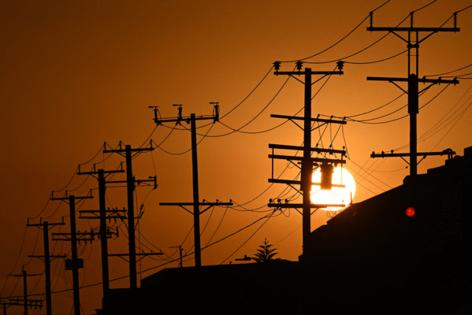Commentary: How California can cash in on federal incentives for green power before they disappear
Published in Science & Technology News
California is often criticized for high electricity costs and slow development timelines. Rightly so: My electricity bill has doubled in a decade, and as a renter I can’t buy solar or batteries to cut the costs.
But critics confuse the real reasons for this problem. According to California’s utility regulators, our power bills are soaring because of drought, wildfires and an antiquated approach to rooftop solar.
Clean energy has been the best solution to this problem — solar, wind and batteries simply cost less to power our lives. Unfortunately, the Trump administration’s One Big Beautiful Bill Act just put a ticking clock on the most affordable energy sources.
The bill repealed tax credits that were created by the Inflation Reduction Act of 2022 and killed federal programs supporting clean energy technological innovation. Utilities and businesses were banking on these policies to build electricity generation, affordably meet soaring power demand and keep the lights on. But instead of a decade of policy certainty as had been expected, federal tax credits for clean energy now are set to abruptly end after 2027.
Californians will pay dearly, adding new costs to already high statewide power prices. The new budget law is likely to spike electricity rates 7% to 11% by 2035, forcing households to pay $320 more per year.
But we’re not powerless: State officials can still help prevent some of these cost increases by buying renewables now while the discount is still available. New projects can qualify for federal incentives if they start construction by July 4, 2026, or complete construction before the end of 2027. More than likely, this means signing contracts by the end of 2025.
If utilities and developers can hit this mark, Californians will save 30% to 50% compared with what new renewable power generation will cost after the credits expire.
Developer interest is strong. Enough prospective wind, solar and battery projects to power 100% of California’s statewide demand have filed requests with our grid operator to plug into the grid. But connecting a new project currently takes five years — too late to hit that narrow window.
Getting projects online quickly is critical to cutting our electricity costs. Here’s how to do it.
UC Berkeley analysis suggests that building clean energy at existing gas-fired power plant sites — an innovative approach called “surplus interconnection” — could save money immediately and solve our timing problem.
Gas plants are running less often as California cuts its planet-warming emissions, leaving their grid-connected transmission wires mostly unused.
Building solar and wind projects adjacent to these gas plants could use this existing “surplus” infrastructure to add massive amounts of clean energy, rather than waiting five years for grid upgrades to unlock the same potential.
The UC Berkeley report found surplus interconnection could add 29 gigawatts of solar and wind potential at existing gas plant sites — enough to meet our state’s renewable energy targets for 2035, or power more than 60 large artificial intelligence data centers.
While using or transferring surplus interconnection is a business decision for existing generation owners or a contractual matter with prospective new generation owners, the electricity utilities that buy power on our behalf significantly influence these decisions.
All levels of California’s state government can help.
The state Legislature is already debating Assembly Bill 1408, which would promote surplus interconnection by directing California agencies to examine and integrate this approach into their planning and procurement processes. Passing the bill will empower agencies and our grid operator, the California Independent System Operator, to accelerate procurement and save money.
The California Public Utilities Commission can require utilities to accelerate resource procurement through its proposed Reliable and Clean Power Procurement Program. The commission can also clarify that resources using surplus interconnection qualify for expedited procurement toward meeting California’s clean energy goals.
Gov. Gavin Newsom can order expedited procurement by the commission, and our executive agencies can prioritize permitting these near-term projects. The governor can require utilities, power plant owners and agencies to identify an action plan for accelerated permitting and procurement and take it to the Legislature. Such recommendations must be swift — we have weeks, not months — to hit the rapidly closing construction window.
In the longer term, the California Independent System Operator can incorporate surplus interconnection into its transmission planning processes — one significant way to cut costs on the $45 billion to $63 billion in new transmission infrastructure that the operator says California must build by 2045.
With electricity rates surging, California could be a role model for America — and the world — in making the most out of our existing transmission infrastructure with advanced transmission technologies and surplus interconnection.
Congress’ repealing of federal incentives and policies means we can’t afford to wait. Bold action can tap billions in clean energy investment and save consumers hundreds of millions — but only if the state moves quickly.
____
Mike O’Boyle is the acting policy team director at Energy Innovation, an energy and climate policy research firm in San Francisco.
©2025 Los Angeles Times. Visit at latimes.com. Distributed by Tribune Content Agency, LLC.







Comments